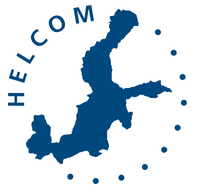The report summarizes the occurrence, concentrations and pathways of pharmaceuticals into the environment in the Baltic Sea regionTonnes of pharmaceuticals enter freshwater and marine environments yearly, mainly through municipal waste water treatmentNew HELCOM expert group to support policy-making and dialogue on pharmaceuticals in Baltic watersA has been recently published by UNESCO and HELCOM. The report was developed jointly by the Baltic Marine Environment Protection Commission (Helsinki Commission, HELCOM) and Policy Area Hazards of the European Union Strategy for the Baltic Sea Region (EUSBSR). It serves as a case study within the framework of UNESCO Series under UNESCO-IHP’s International Initiative on Water Quality (IIWQ) Project on ‘Emerging Pollutants in Wastewater Reuse in Developing Countries’Photo credit: through Creative Commons. Cropped from original.Out of the eight therapeutic groups included in the report, the available data indicate that the most frequently measured substances in the Baltic Sea marine environment belong to the groups of anti-inflammatory and analgesics, cardiovascular agents, and central nervous system agents. Ninety-one percent of the measured pharmaceuticals were detected in Municipal Waste Water Treatment Plants (MWWTPs), 52% in freshwater and 44% in marine environment.The main pathway of pharmaceuticals into the freshwater and marine environments, according to the collected data, is via the discharges of MWWTPs effluents. Only nine out of 118 assessed pharmaceuticals were removed from wastewater during the treatment processes with an efficiency over 95%, and nearly half of the compounds were removed with an efficiency of less than 50%. Sixteen compounds were found in higher concentrations in effluents from MWWTP than in influentsThe report includes data on 167 pharmaceutical substances sampled in the marine environment, 111 in surface freshwater systems, and 156 pharmaceutical substances and 2 metabolites in influents, effluents and sludge from municipal wastewater treatment plants. Data were reported by Denmark, Estonia, Finland, Germany, Poland, Russia (St. Petersburg), and Sweden. The data presented in the report cover the period 2003–2014 and include 47,600 individual samples on pharmaceuticals in MWWTPs and freshwater as well as 4,600 individual samples in the coastal, open sea and transitional areas of the Baltic Sea marine environmentIn order to follow up the findings of the Status report, HELCOM decided to establish an expert group () to provide scientific background for the regional environmental policy regarding pharmaceuticals in the environment and to serve as a platform for regional dialogue for various environmental issues related to pharmaceuticals.The HELCOM group will cooperate with the , launched by Policy Area Hazards of the EU Strategy for the Baltic Sea Region. The cooperation platform is intended to support the implementation of projects and other activities aiming to reduce the emission of pharmaceuticals to the Baltic environment, as well as to support regional policy development and stakeholder cooperationThe case study was funded by UNESCO, HELCOM and PA Hazards.* * * Note for editorsThe Baltic Marine Environment Protection Commission, usually referred to as , is an intergovernmental organization of the nine Baltic Sea coastal countries and the European Union working to protect the marine environment of the Baltic Sea from all sources of pollution and to ensure safety of navigation in the region. Since 1974, HELCOM has been the governing body of the ‘Convention on the Protection of the Marine Environment of the Baltic Sea Area’, more commonly known as the Helsinki Convention.
HELCOM’s focuses on nutrient
and hazardous substance inputs from diffuse sources and point sources on land,
including the follow-up of HELCOM nutrient reduction scheme implementation. The
group ensures the necessary technical underpinning and develops solutions for policy-relevant
questions and needs. Marine litter and underwater noise are also coordinated by
this group. Its official name is the Working Group on Reduction of Pressures
from the Baltic Sea Catchment Area.For more information, please contact:
Dmitry Frank-Kamenetsky Professional Secretary HELCOM Tel: +358 40 630 9933 Skype: helcom68 E-mail: dmitry.frank-kamenetsky(at)helcom.fi
The report summarizes the occurrence, concentrations and pathways of pharmaceuticals into the environment in the Baltic Sea region.
